A relatively straightforward maintenance item that you ought to pay attention to is the replacement of the Volkswagen Golf wheel bearings. The wheel bearings are crucial components of the car’s support system, allowing the wheels to rotate freely or carry the load of the car while it moves. However, over time and use, these bearings can fail, and some signs can be heard or felt in the steering wheel, loss of handling and some vibrations. The purpose of this article is to provide you with clear information on the replacement costs for wheel bearings on a Volkswagen Golf, the factors influencing the cost, the likely signs of worn bearings, and the importance of replacing them on time. After reading this, you will understand what needs to be done and how to complete this necessary car repair.
How much does a wheel bearing replacement cost for a Volkswagen Golf?
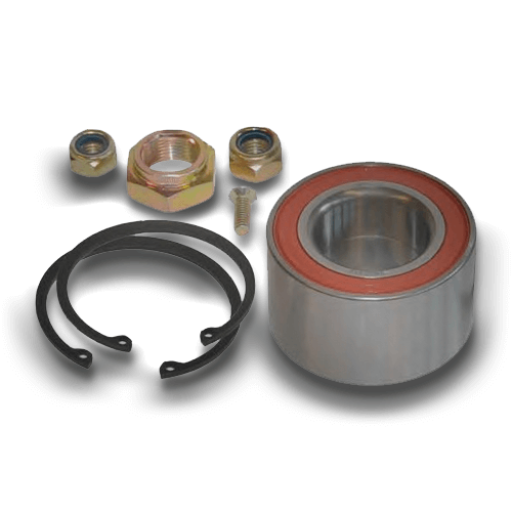
The price to replace the wheel bearing on a Volkswagen Golf can vary by a lot depending on the garage one visits, the location and salary of that region, and the model year of the car, but on average, its price lies between the 200 to 400 dollar range, and this is the cost incurred on a single wheel. Depending on the parts, an estimate between $50 and $150 is incurred, whereas the job is more complex and requires $150 to $250 on job payment. The payment for work can increase a lot because of the complexity of the job. You should always consult different garages to get the best price possible.
The average cost for a Volkswagen Golf wheel bearing replacement
Based on my knowledge regarding the automotive repair industry, the process of changing the wheel bearing on a Volkswagen Golf varies from one person’s situation to another. However, estimates are usually between two to four hundred dollars for each wheel and anywhere from fifty dollars to one hundred fifty dollars for the parts. Most of the cost is usually for labor, which can range from one hundred fifty to two hundred and fifty dollars, which in return depicts the level of accuracy and hard work involved in such a task. I suggest always getting a few quotes from credible repair shops with fair pricing so that you are sure to receive a compromise between good service and a reasonable price.
Factors affecting the replacement cost estimate
I found out that there are factors that affect the cost of wheel replacement. Size and type have a bearing, for instance, larger wheels or those larger wheels are needed for performance or luxury vehicles which have a higher cost. Furthermore, the wheel material also has a cost implication; for example, alloy wheels, in most cases, are more costly than steel wheels because they are lighter and more appealing. Also, your geographical location has an effect on the pricing of the wheels since it will affect labor charges, such as in the case of huts. Last but not least, the difference in cost can also be observed in the case of replacement wheels when deciding to buy either OEM (original equipment manufacturer) or aftermarket replacement since OEM has a higher cost but assured compatibility.
OEM vs. aftermarket parts: Price differences
As for the differences in the cost of OEM and aftermarket parts, I can explain this from my experience. These two options are summarized below:
- Cost: Since OEM parts are manufactured by the same company that made the original parts for your vehicle, they are usually more expensive. This ensures compatibility and meets the original standards during the manufacturing process. Aftermarket parts, on the other hand, are made by third parties and tend to have a wider range of pricing- some are cheaper, while others, which have premium features or enhanced performance, may be more expensive.
- Compatibility: With OEM parts, you shall receive an original part for your vehicle that is no different from the original part. There is no gamble involved, hence the reason why these parts tend to be stress-free. There’s another factor — After market parts can also be used but the fitting quality is disparately modulated range, on some occasions they don’t even reach up to the vehicle’s83ando its specifications, especially when it’s made from a low-tier company.
- Quality: OEM parts are manufactured and meet the same standards as your vehicle. All the aftermarket parts are produced without any vehicle restraints; therefore, the best that can be guaranteed is quality that can be below the marketing standard, at the marketing standard, or even surpass it, depending on the manufacturer. Turn to trustworthy aftermarket brands that are worth going for if that is the case.
- Warranty: OEM parts are provided with a warranty that is applicable for the period that the vehicle was manufactured in order to provide you with peace of mind. For aftermarket parts, even the range of warranty can be sufficiently different, whereas in some other cases, some parts do not bear any warranty at all.
- Availability: This may be the consideration that is most important. Turnkey parts may be available from various dealers or manufacturers, which may require time and expense. On the contrary, aftermarket components save expenditure and time owing to their ease of availability through a number of distributors.
In the end, the OEM and aftermarket’s decision lies with the customer, be it price, quality, or ease of use. On a more personal note, I consider it my duty to get into the specifics of my client’s requirements whenever I guide them concerning the repairs. To illustrate, if a component is required to meet precise requirements and long term usage is of importance, an OEM part must be used. On the contrary, for some aftermarket replacements, OEM parts are not necessarily needed and are rather Wholesale bargains, and concepts that are not too complicated might be able to do just as well.
What are the signs of a bad wheel bearing in a Volkswagen Golf?
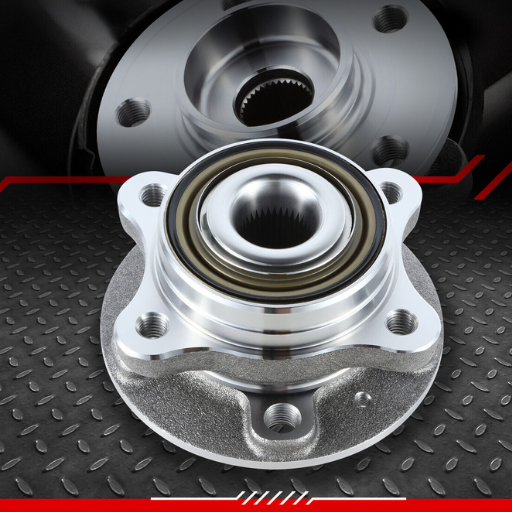
A Volkswagen Golf’s wheel bearing usually does not tend to be a complex issue because it has trouble signs that are very visible if a person knows what to look for. In the case of cars where the load is shifted towards the wheel cutouts, one of the first signs is usually a humming, grinding, or growling sound, which gets more amplified as the cars speed up. For instance, especially in active wheel bearings of a vehicle, one shoulder can get more active than the other and create vibrations and rotating effects not only in the steering wheel but also in the vehicle as a whole. Other possibilities, such as irregular tire wear, can also be regarded as signs of a defective wheel bearing. Other possibilities, such as irregular tire wear, can also be regarded as signs of a defective wheel bearing. Most importantly, always remember that ignoring these early signs might result in severe damage down the road.
Common symptoms of wheel bearing failure
Considering the fact that wheel bearing failure poses a risk, it is essential to know its signs and symptoms. The ones that stand out include strange sounds coming from the wheels, such as a low humming, grinding or growling, lumps or jerks in the steering wheel or even in the whole vehicle, uneven or bald patches of the tire, and free play on the steering or wheels. If detected early enough, it should only require a simple repair, thus allowing for a more comfortable drive.
How to diagnose a wheel bearing problem
Throughout my whole experience of diagnosing and fixing any car problems, diagnosing a wheel bearing problem has always been peculiar, starting with your close observations of the sounds and feelings your vehicle produces. If there is a rumbling or grinding of the wheels, which occurs sporadically while taking a turn, it is more likely than not an indicative sign of a bad bearing. I also note down whether there is any looseness in the wheel hub, which can be checked by lifting the vehicle and shaking the wheel; if there is a lot of whack, then more often than not, there is a problem. Furthermore, there could be irregular wear on the tires, and in some cases, I would use a mechanic’s stethoscope to trace the origin of these loud abnormal noises while the wheel rotates. Now, before actually getting onto repairs, I go through a thorough manual inspection, which has always assisted me in identifying the issue.
When do wheel bearings need to be replaced?
When wheel bearings show signs of damage, I have decided in my mind that I am going to replace them. As far as my experience goes, here are the key signs that I always look for:
- Noise While Driving
One of the most noticeable symptoms is noise coming from the wheels in the form of grinding or humming sounds. This noise is often apparent when the vehicle is in motion and is frequently associated with the deterioration of the bearings.
- Vibration in the Steering Wheel
If we notice any vibration in the steering wheel when a vehicle is turning the wheel or moving at a particular speed, then this could indicate that the wheel bearings are slightly worn out. The uneven movement or looseness of the wheel spindle causes the vibration.
- Excessive Play in the Wheel Hub
When I take a look at a car, I check the wheel for play by twisting it around in one direction while still holding the other end. It’s not uncommon to see that sort of movement. In most cases, it means the bearings are in a bad state and will need to be changed in order to provide further sturdiness.
- Uneven Tire Wear
Due to malfunctioning wheel bearings, one can easily observe substantially odd or inconsistent patterns of wear in the internal, external, or diagonally opposite regions of the wheels. The problem with malfunctioning bearings may lead to such effects as alteration in the wheel’s axis or distribution of the weight, which makes the part of the tire being in contact with the road surface change in the contact area.
- ABS Warning Light Activation
Most cars nowadays have wheel bearing assemblies that are fitted with sensors. When the ABS light is activated, the wheel bearings are also bad because they affect the sensor.
- Overheating of the Hub Area
When I’m out driving for an extended time or after I turn off the vehicle, I sometimes feel the area around the hub for warmth. This could mean the wheel bearing is going bad and causing friction, which would cause overheating. This is a less common indicator, but it’s one I always check during inspections.
Everyone knows that wheel bearings wear out with time, and it is easy to determine when to replace the bearing by the wear parameters. Whenever one or more of these symptoms are detected, it is likely that the wheel bearings should be replaced immediately to avoid further damage to the vehicle or rendering it unsafe to operate. However, proper servicing and timely intervention can help extend the other components, and the other components’ wear will be smoother.
Can I replace the wheel bearing myself on a Volkswagen Golf?

If you have the tools, experience, and time, then replacing the wheel bearing on a Volkswagen Golf is possible. The holding part of the approach seems to be the mechanical aptitude that one needs within the GPS. Depending on the model, there might be a requirement for a jack, a torque wrench, or even a bearing press. I always stress caution in that this is not a job suitable for a novice, as it requires the removal of the wheel hub assembly and careful installation of the new bearing to avoid damage. But if you get them right and you have the right tools and equipment, it is simple. However, if you are not sure, I suggest calling an expert who will be able to carry out the task with ease.
DIY wheel bearing replacement: Pros and cons
it is worth mentioning that replacing wheel bearings by yourself has advantages and disadvantages. One of the biggest pros is cost savings—professional repair shops are notorious for their labor costs and having to do the task by yourself saves money. It is also a great way to strengthen your mechanical knowledge and enhance your self-assurance in repairs. However, the disadvantages also deserve attention. The lack of adequate tools or lack of know-how can render a new bearing or other parts unusable, which also means extra expenditure. Moreover, it is a lengthy procedure that demands concentration and time. All in all, this is a practice that is suited for the well-experienced and well-prepared, while for the less capable or those without equipment, it is better to go for experts.
Tools and skills needed for a wheel bearing replacement
In order to change the wheel bearing well, you must have the necessary tools, such as a socket set, a torque wrench, a breaker bar, and a bearing puller or a press. A jack, jack stands, a hammer, and gloves are also needed for safety and convenience. Requirements in terms of skills include knowledge of vehicle systems, the ability to read manufacturer instructions, as well as the skill of peaceably applying torque. Prior exposure to automotive mending makes the practice easier so that chances of errors or damage are minimized.
Step-by-step guide for VW Golf wheel bearing replacement
- Prepare the Vehicle
Engage the hand brake after placing the vehicle on a level surface and loosening the lug nuts, which is the wheel that has a bearing that requires replacement. Using a jack, safely lift the vehicle and follow it up with jack stands.
- Remove the Wheel and Brake Components
Once the wheel is out, unscrew the brake caliper and the brake disc, and you are on the way to the hub assembly.
- Access the Wheel Bearing
Remove the axle nut followed by other components which are blocking the hub, this part varies from model to model, and some models require the hub assembly to be unbolted to access the bearing.
- Extract the Old Bearing
This step requires the use of a bearing puller or press, which can carefully remove the old bearing from the hub without damaging any parts.
- Install the New Bearing
Use an appropriately used bearing press to install a new bearing into the new bearing housing, thus making sure that it is aligned correctly. Torque and alignment should preferably be done according to the manufacturer’s specifications.
- Reassemble Components
Fix the hub and the axle nut back, along with the brake components and the wheel. Go through the procedure of snugging all the bolts securely while maintaining the required torque specifications.
- Test the Vehicle
Bring the car down to the ground with all the rest required lags nuts in the right place, afterwards there is a need to take the vehicle for a test drive in order to check whether the repairs are successful and whether there is any noise or vibration felt.
The safety and the steps to follow are very accurate in conjunction with the underlying specific repair manual that is assigned to your VW Golf model.
What’s the difference between replacing a wheel bearing and a wheel hub assembly?
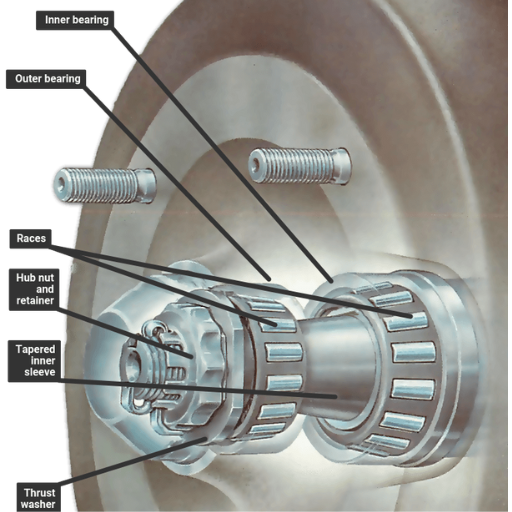
To remove and install a wheel bearing, it is essential to first remove the bearing from either the wheel hub or knuckle. For this process to be efficient, requiring tools like a press or a bearing puller will ensure its efficiency. But replacing a wheel hub assembly is different as it doesn’t require removal or uninstallation, it rather requires the whole bearing which is inside the hub to be replaced. The latter is often said to be cheaper and time-saving, but it does bring its fair share of issues. Whether a hub assembly should be replaced or serviced will always depend on the specifics of the design of a car, along with whether only a bearing would do.
Wheel bearing vs. wheel hub assembly: Which one do you need?
If your automobile is designed in a way that allows the individual replacement of wheel bearings, and you have the right tools and knowledge, you might consider the replacement of the bearing as the most economical option. However, in case your automobile is one of those modern cars that need the entire wheel hub to be exchanged, or if you don’t want to go through a long and tiresome process and would rather prefer a simpler and quicker way of doing things, yes, the hub assembly is better, but it comes at a higher price. At the end of the day, however, the choice depends on the design of your car, how all the components function, and, most importantly, what your repair preferences are.
Cost Comparison: Bearing replacement vs. hub assembly replacement
bearing replacement almost always tends to be the cheaper option in parts. However, it often pays for more labor and specialized tools, which may add to the total cost if you are getting it done by a professional mechanic. On the other hand, dealing with bearing replacement would normally take more time and would require more accuracy, but the cost of doing so is substantially lower as compared to the whole hub replacement. At the end of the day, it boils down to whether you wish to spend on the parts and be less stressed about the time and labor or want to take the easy way out with a quicker turnaround but spend more.
How long does a wheel bearing replacement take on a Volkswagen Golf?
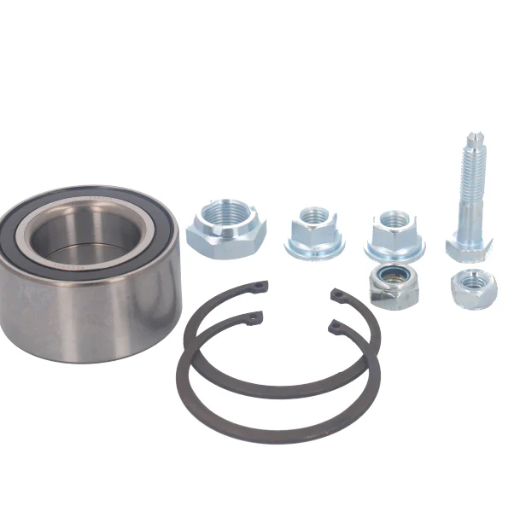
When working on a Volkswagen Golf, a mechanic usually spends around 1.5 to 3 hours replacing a wheel bearing. Depending on the scenario, which includes a vehicle’s condition, mechanic’s experience, and tools available, the parts replacement may vary.
Dealership vs. independent mechanic: Pros and cons
Selecting a dealership guarantees the necessary factory-trained professionals and tools for the appropriate Volkswagen parts. But in most instances, this is more expensive. For example, independent mechanics can offer almost similar quality, though at a much lower cost, providing they are acquainted with Volkswagen models. First, check their qualifications and the standard of the replacement part. Both have advantages but the best option is dependent on how much you are willing to spend and the type of repair job.
How to find a reputable mechanic for VW Golf repairs
The infographic cites further statistics. While the engine repair costs $500 to $600, it is quite popular among vw enthusiasts since it enhances the performance of the vehicle. Here, I will prove it with real-world examples so you can count on me. The average amount spent on brakes is 300 dollars. If you found this site, you definitely have this great family car, and we guess you are loving it. Let me remind you that many of my colleagues have Volkswagen Golf releases. What is your greatest expense when maintaining it? They are quite controversial primarily due to the various types of expenses. So I recommend a qualified professional.
Are there any ways to extend the life of my Volkswagen Golf wheel bearings?
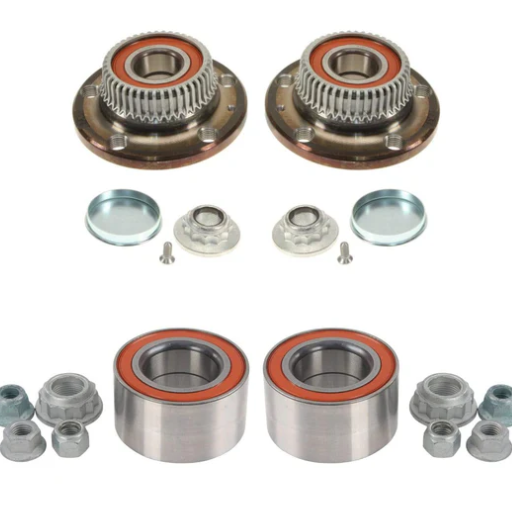
Definitely! I can say there are many procedures that I’ve seen work well and that can help extend the life of the bearing fitted in the wheel of your VW Golf. It is, however, vital that one avoids purposely driving through deep water or mud, as this allows contaminants to penetrate the bearings and shorten their lifespan. Inspecting and maintaining them frequently is also very important, including but not limited to listening for loud sounds, shaking or whining, vibrations, or dry bearings. Do not overload the vehicle, as that adds additional pressure on the bearings. Moreover, any issues with the suspensions or the alignments of the wheels should always be resolved, which can create uneven pressures and increase the rate at which the bearings wear out. These tips should help in preventing the damage on the wheel bearings making them work efficiently for a longer time.
Maintenance tips for prolonging wheel bearing lifespan
Charging attention to the right practices is the best answer to ensuring that the lifespan of your wheel bearings will be maximized. For example, it is very advisable to avoid situations where the bearing is exposed to water and other contaminants, make sure that there is enough lubricant, perform regular inspections for noise and/or vibrations, and avoid load limits for the vehicle. Moreover, attempt to resolve the suspension and alignment issues in a timely manner. Otherwise, it can create uneven tension. Routine practices and preventive actions are crucial in order to achieve long-lasting performance.
How driving habits affect wheel bearing wear
I would say that the driving style is paramount to the growth and the degradation of wheel bearings. Harsh braking, constant sharp turns, and rough driving increase the amount of force exerted on the wheel bearing, ultimately degrading it at a much faster rate. Likewise, sustaining uneven roads for a long duration can induce violent vibrations and shocks on the bearings, destroying them slowly day by day. On the other hand, maintaining an even amount of speed, avoiding as many potholes and bumps in the road as possible, and easing the amount of force applied while stopping and turning can help. These minor tweaks in driving not only help with having the wheel bearings last longer but also allow the users to enjoy better control and enhance the safety features in their vehicles.
Reference
- RepairPal: Volkswagen Golf Wheel Bearing Replacement Cost Estimate – Provides an estimate of the replacement cost, including labor and parts.
- Reddit: $1100 for front wheel bearing replacement? – A discussion on the cost of wheel bearing replacement among VW Golf owners.
- VWVortex Forum: Is $500 for a wheel bearing replacement reasonable? – Forum thread discussing reasonable costs for wheel bearing replacement.
Frequently Asked Questions (FAQs)
Q: What is the average cost of replacing a wheel bearing on a Volkswagen Golf?
A: The cost to replace a wheel bearing on a Volkswagen Golf can vary but typically ranges from $300 to $700 per wheel. This price includes both parts and labor. To get a free price estimate on Volkswagen Golf wheel bearing replacement in your area, it’s best to consult with local mechanics or use online estimator tools.
Q: How can I tell if my Volkswagen Golf needs a wheel bearing replacement?
A: Signs of a worn wheel bearing include a humming or growling noise that changes with vehicle speed, vibration in the steering wheel, or uneven tire wear. If you notice any of these symptoms, especially on the front passenger side or front left, it’s important to have your vehicle inspected by a qualified mechanic or VW tech.
Q: Is it necessary to replace both front and rear wheel bearings at the same time?
A: It’s not always necessary to replace both front and rear wheel bearings simultaneously. Typically, wheel bearings wear out individually, so you can replace only the worn bearing. However, if your Volkswagen Golf has high mileage, it might be cost-effective to replace them in pairs (left and right) for even wear and performance.
Q: Can I replace the wheel bearing on my Volkswagen Golf myself?
A: While it’s possible for experienced DIY mechanics to replace wheel bearings, it’s generally not recommended for novices. The process involves specialized tools to press out the old bearing and install a new hub. It also requires proper torque specifications and may involve recalibrating the ABS sensor. For most Golf owners, it’s best to have this work done by a professional to ensure proper installation.
Q: How long does it take to replace a wheel bearing on a Volkswagen Golf?
A: The time required to replace a wheel bearing on a Volkswagen Golf can vary depending on the specific model and the mechanic’s experience. On average, it takes about 1-2 hours per wheel. This includes time to remove the wheel and tire, steering knuckle, and press out the old bearing and install the new one.
Q: Are there different types of wheel bearings used in Volkswagen Golf models?
A: Yes, Volkswagen Golf models may use different types of wheel bearings, including ball bearings and roller bearings. The specific type can vary depending on the model year and whether it’s a standard Golf or a GTI. When replacing wheel bearings, it’s important to use the correct type and quality, such as FAG or other reputable brands, to ensure proper fit and performance.
Q: How often should wheel bearings be replaced on a Volkswagen Golf?
A: Wheel bearings on a Volkswagen Golf don’t have a specific replacement interval, as their lifespan can vary greatly depending on driving conditions and vehicle maintenance. However, many wheel bearings last between 80,000 and 100,000 miles. Regular inspections during routine maintenance can help identify worn bearings before they fail completely.
Q: Can a faulty wheel bearing affect my Volkswagen Golf’s ABS system?
A: Yes, a faulty wheel bearing can potentially affect your Volkswagen Golf’s ABS system. The ABS sensor is often integrated with or located near the wheel bearing. A worn bearing can cause incorrect speed readings or damage to the ABS sensor, potentially triggering warning lights on your dashboard. This is another reason why prompt attention to bearing noise or other symptoms is important.
